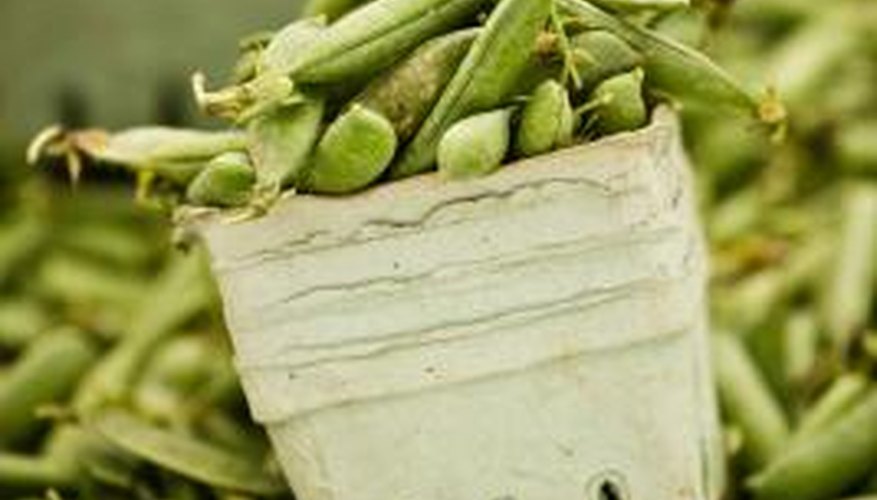Bean plants are the second most popular vegetable plants---tomato plants are No. 1---for growing in the home garden, according to the University of Illinois. The plants are well known for producing edible seeds---the beans---which are rich in fibre, protein and several other nutrients. These beans come in a variety of sizes, but most are the shape of kidneys, which is how one of the beans got its name.
Classification
Scientists classify bean plants as legumes. Legumes, unlike other types of plants, do not grow their seeds inside of fruits. Instead, they grow their seeds inside of long structures known as pods. In some instances, as is the case with green beans, people will refer to these pods as "beans." However, the actual seeds of legumes are always inside the pods. Other types of legumes include peas, peanuts and lentils.
- Scientists classify bean plants as legumes.
- However, the actual seeds of legumes are always inside the pods.
Planting
Bean plants grow during the spring and summer and are unable to survive the cold temperatures of fall and winter. For this reason, you should always plant bean seeds well after the "last frost" of winter, which is the last time dew freezes in the morning. You can continue planting bean seeds, and harvesting beans from the resulting plants, up until early August. After this point the plants may not have enough time to develop beans before cold weather sets in. As the University of Illinois notes, you should always plant bean seeds an inch deep into the soil.
- Bean plants grow during the spring and summer and are unable to survive the cold temperatures of fall and winter.
- After this point the plants may not have enough time to develop beans before cold weather sets in.
Life Cycle
Each bean seed in a bean pod has its own hard outer-layer or shell. When you plant a bean seed in the soil and apply water to it; the shell of the seed expands and eventually cracks open. Using food that is stored in the seed to generate energy, the roots of the bean plant then spread into the surrounding soil, in search of water and nutrients, while the stem of the plant heads up toward the soil's surface, in search of sunlight. Once the bean plant stem breaches the soil, the plant begins developing leaves. At this point, scientists refer to the plant as a seedling. The seedling will eventually grow into an adult plant and begin producing flowers as well as new seeds.
- Each bean seed in a bean pod has its own hard outer-layer or shell.
- At this point, scientists refer to the plant as a seedling.
Types
There are two main types of bean plants that people commonly grow: pole bean plants and bush bean plants. Pole bean plants are climbing plants, which means they will produce multiple, snaking branches that attach to and "climb" along poles, trellises, latticework and other structures. In comparison, bush bean plants are more treelike, and are able to grow successfully without latching on to objects for support.
